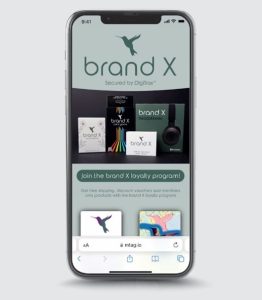Part 3 of our series of topics from Your Complete Brand Protection Guide by Authentix. Our guide helps brands develop holistic and secure brand protection strategies and solutions that safeguard their company, products, customers, and revenue.
In an era where the digital and physical realms are increasingly intertwined, brand protection has emerged as a critical battlefield for businesses aiming to preserve their integrity and consumer trust. It is critical for companies to defend their brand identity and maintain their reputation against the threats posed by counterfeiters, copycats, and various forms of illicit trade and IP abuse. The future of brand protection lies in harnessing innovative technologies and strategies to outsmart counterfeiters and safeguard intellectual property. This article explores the cutting-edge tools and methodologies that are setting new standards in securing brands against the evolving threat of counterfeits.

More and more, the ubiquity of technology enables counterfeiters to produce higher-quality products that mask inauthenticity. Brand owners must begin to think differently about their supply chains and how to secure them. This means not only working with trusted partners across the supply chain, but also deploying advanced tools and technologies for brand protection. Yes, it means fighting fire with fire. This is the future of brand protection.
Counterfeiters are creative, resilient, and constantly evolving. Therefore, it is important for the industry to innovate and develop new technologies. New printing techniques, for example, along with the complexity of the designs, make features more difficult for counterfeiters to replicate.
These advancements deter counterfeiting and safeguard consumer goods such as food and beverages, fashion, and even cleaning products, which are increasingly targeted by counterfeiters. In addition, developing security printing techniques and features that are economically feasible for smaller brands to adopt is essential, ensuring widespread protection across various industries.
With the increasing reliance on online platforms to sell products, brands are more vulnerable to cyber threats, hacking, and ransomware attacks. This will only increase in the years to come. And, as more people turn to social media to purchase products, companies must be ready to combat negative reviews, false information, and social media attacks. Active social media monitoring and engagement are essential for the future. Implementing strong cybersecurity measures to safeguard customer data will also be crucial.
AI, AR, and Machine Learning in Brand Protection
Two main benefits that AI brings to brand protection are counterfeit detection and image and video recognition. AI algorithms can analyze vast amounts of data to identify patterns indicative of counterfeit products. This can include monitoring online marketplaces, social media, and other channels for unauthorized sellers. Advanced image and video recognition algorithms enable brands to quickly identify instances of unauthorized use of their logos, trademarks, or product images across various platforms.

Emerging technologies like augmented reality (AR) also hold immense potential to revolutionize brand protection. AR can offer an additional level of digital verification of documents or products while fostering consumer engagement and enhancing security measures.
By giving consumers the ability to scan documents or labels on products using their phone, two significant outcomes are achieved:
1. Consumers can participate in interactive brand engagement activities, fostering brand loyalty
2. Consumers inadvertently become inspectors in the field as the absence of AR features upon scanning could indicate a counterfeit product, allowing them to instantly report it.
For a more complete guide to brand protection- why it is necessary, how infringement harms brands and customers, how to develop and implement an effective program, and what to look for in a brand protection partner – download our Complete Brand Protection Guide.
About Authentix
As the authority in authentication solutions, Authentix can help brands create a customized plan to tackle counterfeit products from every angle, collect actionable data, and protect brands and consumers. Authentix works with each company to determine which brand protection solutions are right for their situation.
Authentix brings enhanced visibility and traceability to today’s complex global supply chains. For over 25 years, Authentix has provided clients with physical and software-enabled solutions to detect, mitigate, and prevent counterfeiting and other illicit trading activity for currency, excise taxable goods, and branded consumer products. Through a proven partnership model and sector expertise, clients experience custom solution design, rapid implementation, consumer engagement, and complete program management to ensure product safety, revenue protection, and consumer trust for the best known global brands on the market. Headquartered in Addison, Texas USA, Authentix, Inc. has offices in North America, Europe, Middle East, Asia, and Africa serving clients worldwide.
